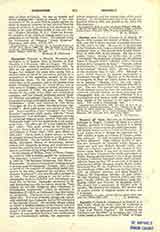

Casserly, PATRICK S., educator, b. in Ireland; d. in New York, where for many years he conducted a classical school. He was also associate editor of the “New York Weekly Register”. He translated the “Sublime and Beautiful” of Longinus, and “Of the Little Garden of Roses and Valley of Lilies” of Thomas A, Kempis; edited Jacob‘s “Greek Reader” (1836), of which sixteen editions were published, and a textbook on Latin Prosody (1845), which is still extensively used in classical schools, and wrote and published a pamphlet entitled “New England Critics and New York Editors”, in reply to an article in the “North American Review” on the merits of certain Greek class-books. EUGENE, his son, b. in Ireland, 1822; d. at San Francisco, California, June 14, 1883: He was graduated from Georgetown University, and in 1844 was admitted to the New York Bar. During the years 1846-7 he served as Corporation Counsel in New York, and in 1850 moved to San Francisco, where he took an active part in both local and national politics. In 1869 he was elected United States Senator from California, but resigned his seat and returned to San Francisco, November, 1873, to resume the practice of the law.
THOMAS GAFFNEY TAAFFE

